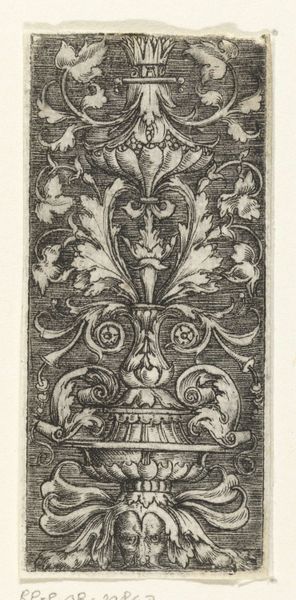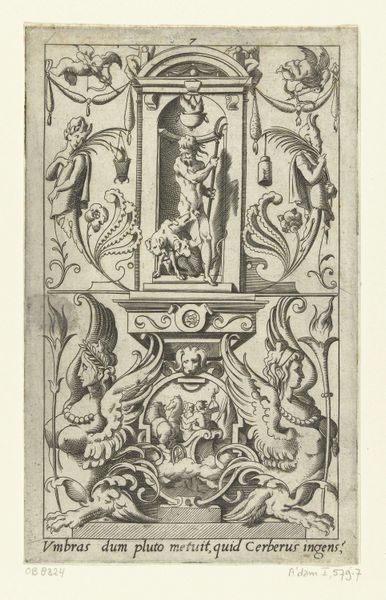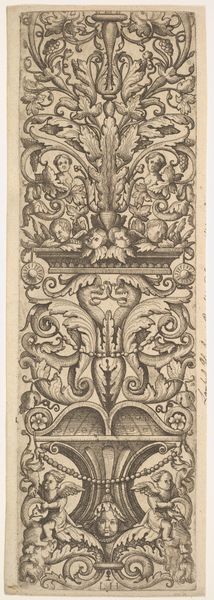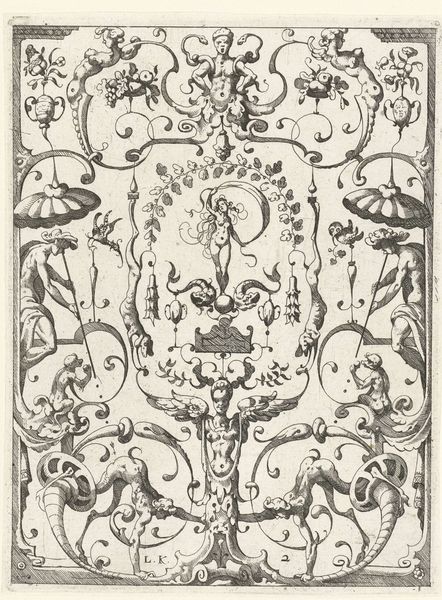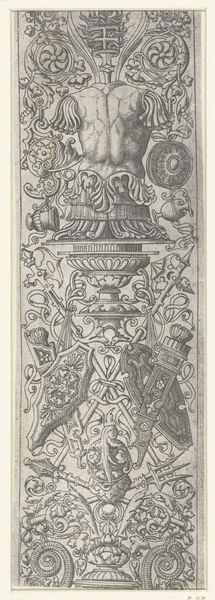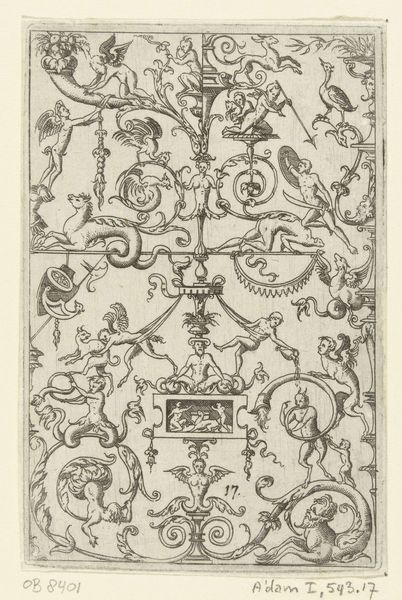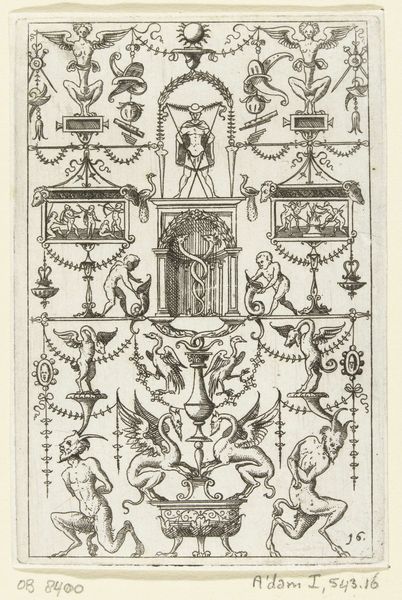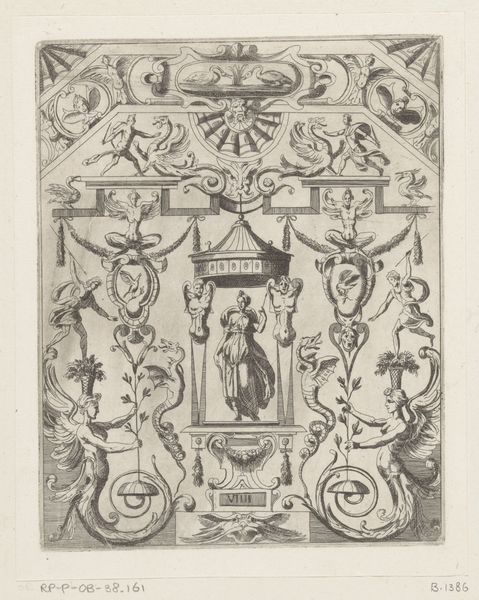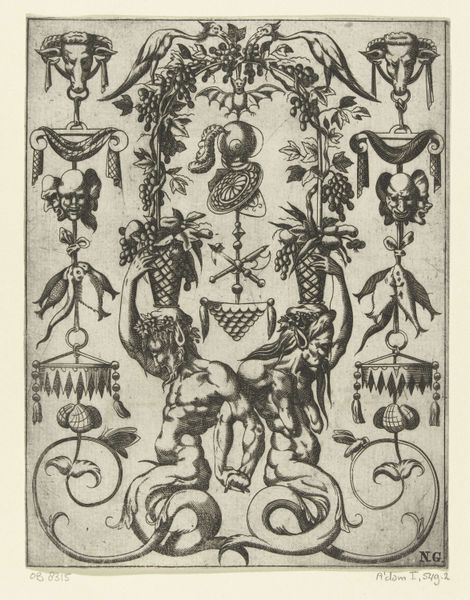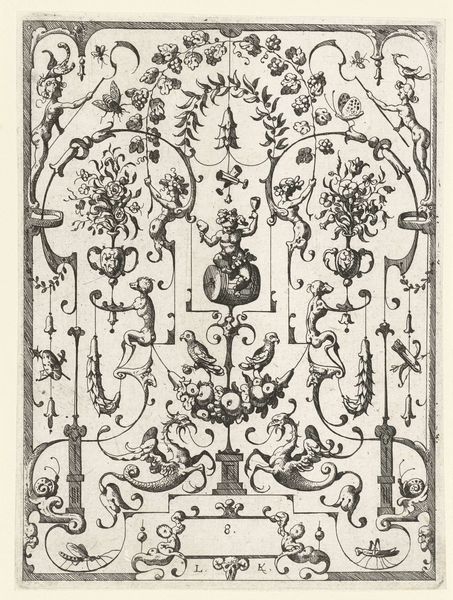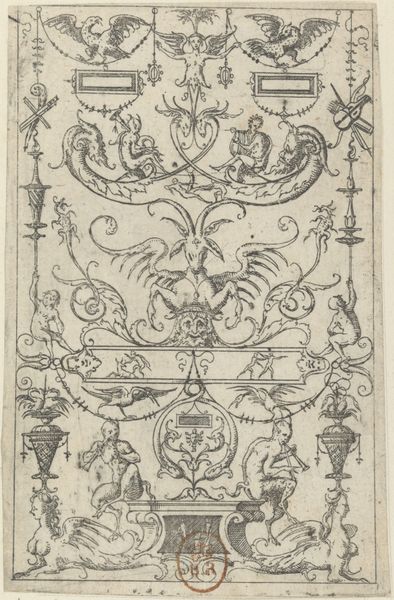
Cartouche met dierenkop en daaronder een cartouche met Madonna met kind c. 1650 - 1671
0:00
0:00
drawing, print, engraving
#
portrait
#
drawing
#
baroque
#
pen drawing
# print
#
pen illustration
#
pen sketch
#
line
#
engraving
Dimensions: height 120 mm, width 86 mm
Copyright: Rijks Museum: Open Domain
Editor: This intricate engraving from the mid-17th century by Lieven Mehus is called "Cartouche met dierenkop en daaronder een cartouche met Madonna met kind." It's incredibly detailed for its size. The juxtaposition of the animal head with the Madonna and child feels… conflicting. What do you see in this piece, particularly given the social context of the time? Curator: The duality you point out is crucial. The piece reflects the Baroque period's interest in contrast and drama. Think about the social and religious landscape of the 17th century. The Catholic Church, a major patron of the arts, was navigating the challenges of the Reformation. How might this image function within that power dynamic? Editor: Maybe the cartouches were used for different audiences? A wilder image on top for the less refined? Or perhaps the juxtaposition was intended to provoke thought about the duality of human nature? Curator: Precisely! The cartouches, acting as framing devices, were often used to legitimize or celebrate power and authority, religious or otherwise. Notice the idealized Madonna and the grotesque animal head; they present contrasting ideas about virtue and the bestial within us. Also, consider that prints were a form of mass communication. Who do you think was the intended audience, and what message were they meant to receive? Editor: Someone wealthy and educated, probably? Someone who appreciated art and understood these references? I hadn’t thought about it in terms of power before. It seems so simple on the surface, just a pretty little drawing. Curator: It is easy to only see a pretty drawing. But even simple images reflect social relations and the forces that shaped the society that produced them. Editor: I’ll definitely be looking at art with a different eye now. It's not just about the beauty; it's about the statement, the intention, and the world it reflects. Curator: Exactly! And how these images helped solidify specific beliefs and values through repeated exposure, forming our own view on art.
Comments
No comments
Be the first to comment and join the conversation on the ultimate creative platform.
